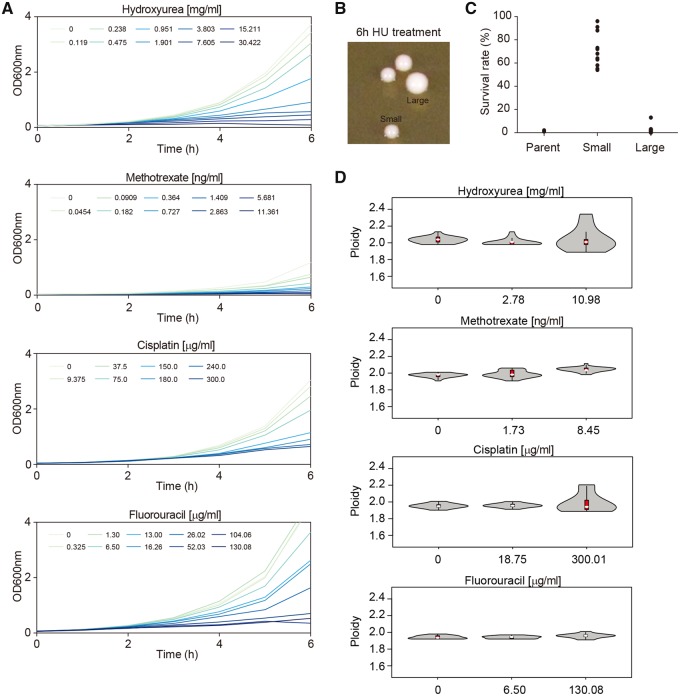Fig. 1.
Candida albicans survivors of anticancer drugs show unstable colony phenotypes and variable ploidy levels. (A) Dose–response curves of C. albicans SC5314 exposed to a range of concentrations of the following anticancer drugs: hydroxyurea (HU), methotrexate (MTX), cisplatin (CDDP), and 5-fluorouracil (5-FU). Cultures were grown in YPD with HU, CDDP, or 5-FU, and in YNB with MTX. Data shown are the average of three technical repeats. Cell growth was monitored at intervals of 60 min in 100-ml flasks and 20 ml of culture medium at 37 °C for up to 6 h, with an initial cell density of 106 cells/mL. OD readings were obtained using cuvettes and a spectrophotometer. As previously reported, HU induced filamentous growth, which skews OD readings upward, but this had no qualitative consequence on the conclusion that HU dose-dependently inhibits C. albicans growth. (B) Small and large colonies appearing on rich medium with no drug (YPD), after restreaking cells that originally survived 2.814 mg/ml HU treatment. (C) Ability of small and large colonies, obtained from (B), to survive (i.e., to form colonies) in HU. Survival rate was calculated as the percentage of colonies growing on 2.814 mg/ml HU relative to the total number of colonies growing on YPD medium without drug. (D) Range of ploidy levels, determined by flow cytometry analysis of DNA content, in cells that survived exposure to the drug at the indicated concentrations. The ploidy distributions are shown as violin plots. The interquartile range is represented by a red box, whereas the median value is indicated by a white dot.

